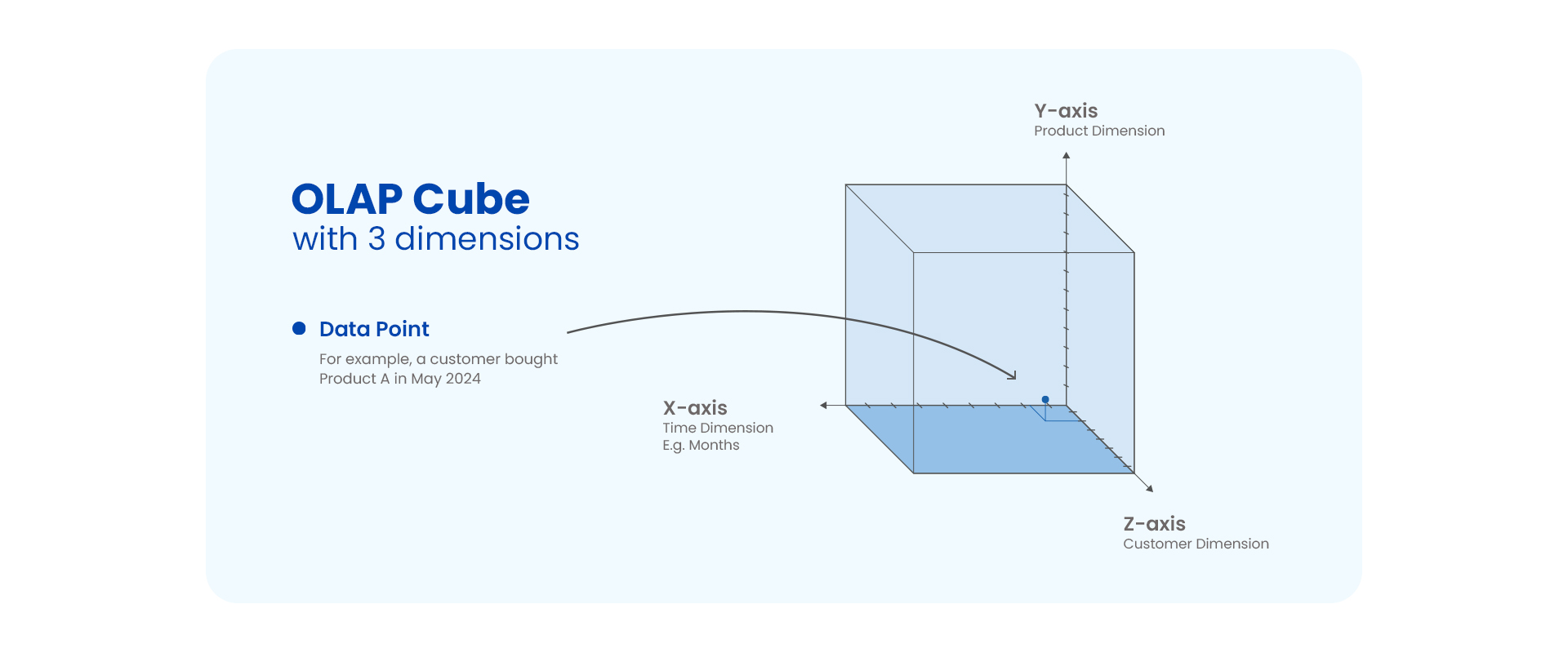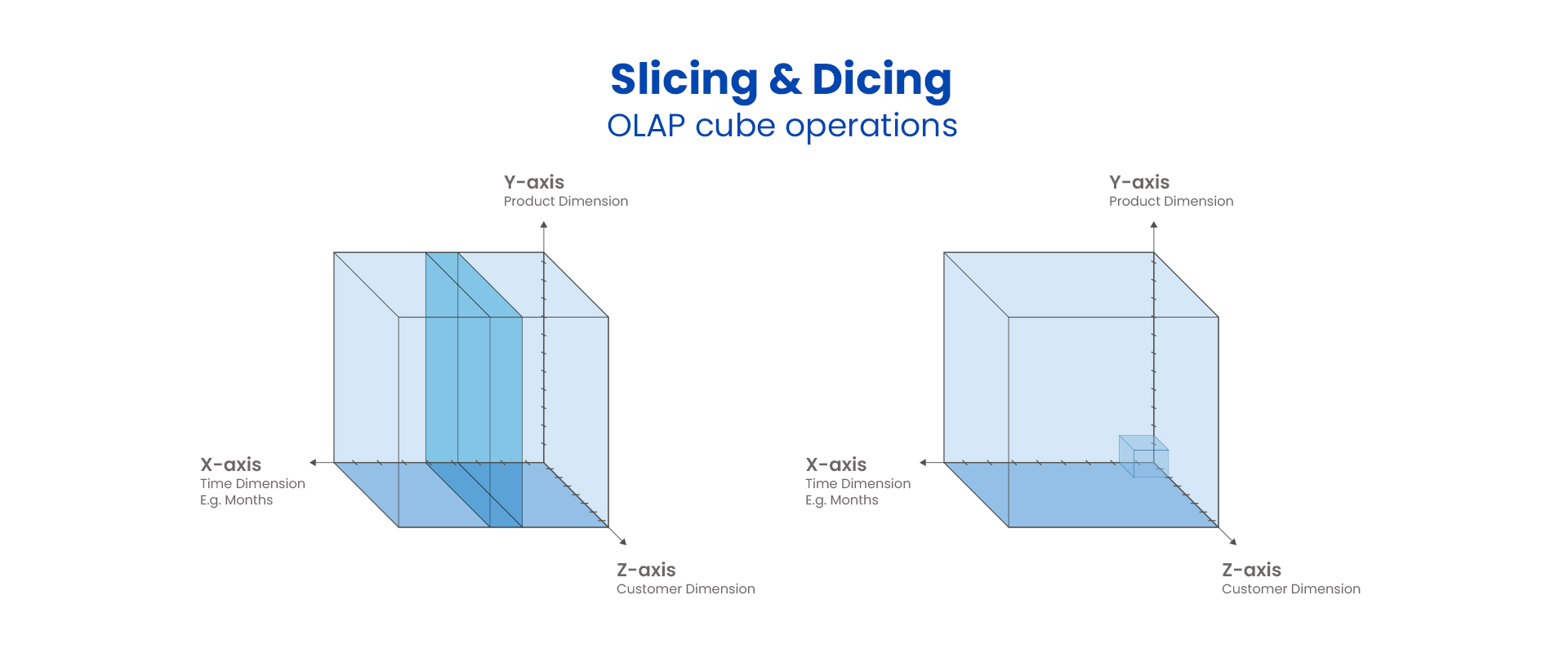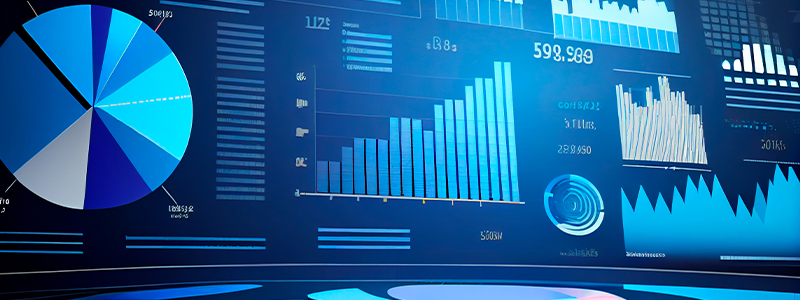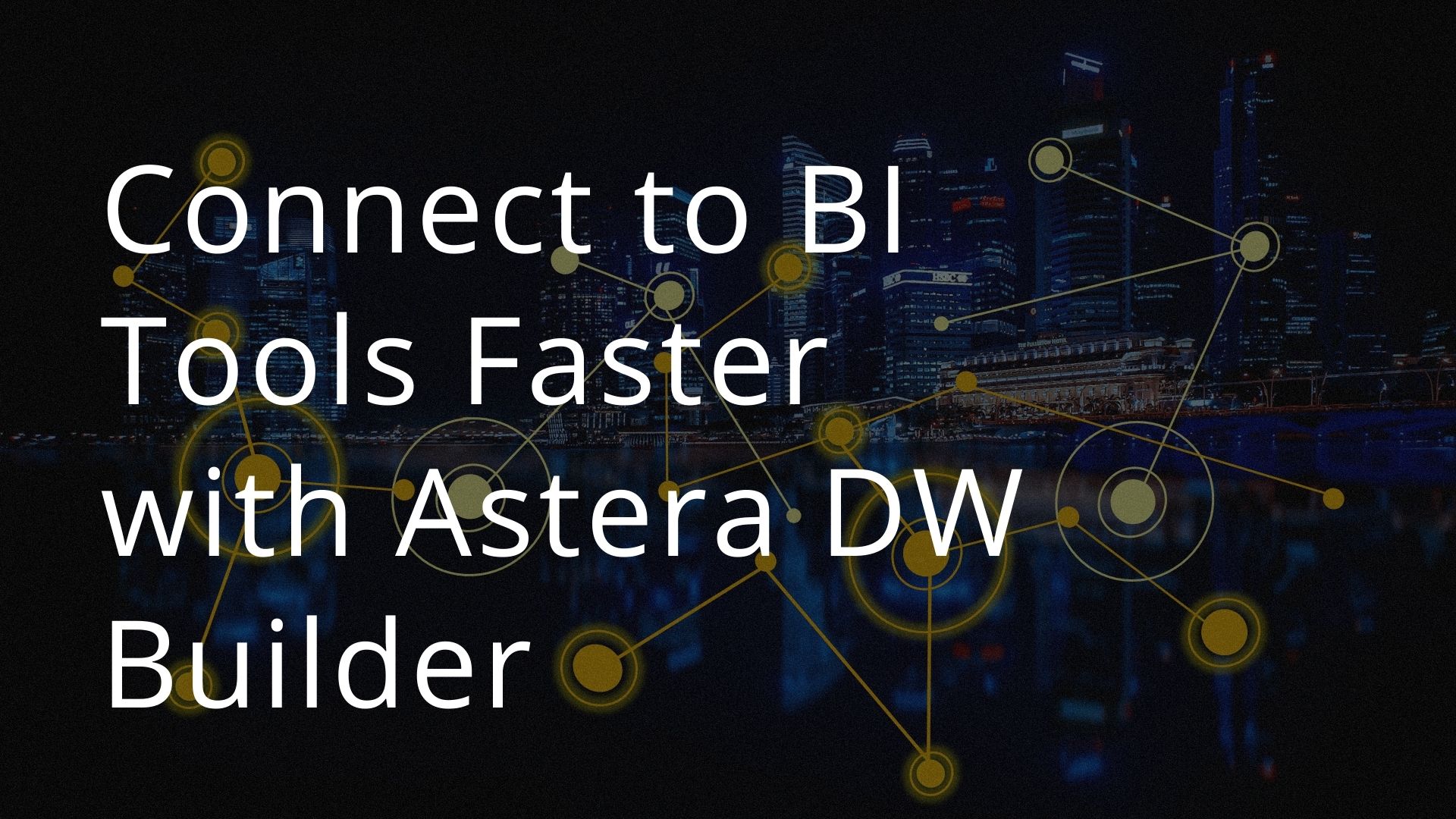
What is OLAP (Online Analytical Processing)?
What is Online Analytical Processing (OLAP)?
Online Analytical Processing (OLAP) is a computing technology through which users can extract and query data to analyze it from different points of view.
These typically high-speed and complex queries are performed on massive data volumes stored in a data lake, data warehouse, or other large-scale repositories. Typical OLAP applications include business intelligence (BI) and forecasting and reporting.
A Data Warehouse Automation Platform That's Optimized for OLAP Systems
Start Using Astera Data Warehouse Builder Today!
Your Free Trial AwaitsOLAP Architecture
Online analytical processing (OLAP) systems contain multidimensional data. Unlike two-dimensional data — arranged simply in rows and columns — multidimensional data has numerous attributes or features. As a result, it’s represented in more than two dimensions.
For example, a multidimensional purchases data set may contain the following attributes:
- Transaction ID
- Timestamp
- Supplier ID
- Product Code
- Product Category
- Product Name
- Quantity
To effectively store such information and keep it ready for querying, you’ll need to build a multidimensional OLAP system comprising the components below:
Data Warehouse
A data warehouse is a central repository of organizational data from different sources. Files, applications, and databases are some of the most prominent sources. However, depending on your business model, it can also collect data from ERP, CRM, and IoT devices
Extract, Transform, Load (ETL) Tools
Data warehouses use the extract, transform, and load (ETL) process to transform and standardize data collected from different sources before OLAP tools can use it. Modern ETL tools speed up the process by automatically obtaining, preparing, processing, and loading the data for analytics.
Try Our Enterprise-Ready ETL Solution for Yourself
High performance, zero coding — accelerate your ETL processes today!
Start Your FREE TrialOLAP Server
An online analytical processing (OLAP) server is a specialized system that leverages rapid execution to facilitate complex queries. It’s the powerhouse that drives the system and is generally the middle analytical tier in a data warehousing solution. It transforms and arranges data into cubes to ensure rapid responses to queries and enable advanced analytics.
OLAP Database
You can connect a separate database to the data warehouse to prevent the analysis from straining the data warehouse’s resources. These databases are called OLAP databases.
OLAP Cube
An OLAP or data cube assists in analytical processing by representing data multi-dimensionally, allowing you to perform analysis from varying perspectives. These cubes are often described as “rigid” because they have a predefined schema or structure that dictates how data is organized within the cube.
This rigidity is a trade-off: The fixed schema means faster query performance and simplified analysis, but, at the same time, it also means limited flexibility and difficulty in handling new data types that weren’t part of the original schema design. Adding a new dimension almost always requires remodeling the cube.

OLAP Analytic Tools
OLAP tools facilitate interaction with the OLAP cube, enabling you to perform advanced analytical operations such as:
- Drill-Down:This operation aids in increasing the level of detail in a data set, either by moving from a higher to a lower position in a dimension’s concept hierarchy or by simply adding another dimension. For example, you can start with yearly purchase data and drill down to quarterly, monthly, and daily figures.
- Roll-Up: Roll-up is the reverse of the drill-down operation and allows users to move from higher to lower granularity levels. For example, you can start with daily purchases and roll up to monthly, quarterly, or yearly totals to examine broader trends.

- Slice: Slicing selects a subset of data using one or more dimensions, helping you focus on particular aspects. You can slice data to evaluate any dimension you’re interested in, such as region, time, or product category.
- Dice: Dicing creates a smaller data cube by simultaneously providing values for multiple dimensions. It helps you analyze data across various dimensional combinations.
- Pivot: Also called rotation, pivot changes a data cube’s orientation to enable viewing it from different perspectives. When pivoting a cube, you can rearrange measures and dimensions to facilitate comparison and analysis.
How Do OLAP Systems Work?
Online analytical processing (OLAP) systems work in a three-step process:

When to Use OLAP Solutions
Generally, online analytical processing solutions are ideal whenever large data volumes undergo complex analyses to obtain insights that can drive decision-making.
Here are a few instances where using OLAP systems is the right call:
-
Complex Analytical Requirements
These systems are useful when you need to perform multidimensional analysis with numerous dimensions and measures.
-
Large Data Volumes
When there are significant data volumes, analyzing them through traditional relational database management systems (RDBMS) isn’t feasible because of performance constraints. Since data is pre-aggregated and summarized before users query the system, OLAP cubes ensure fast response times, even for big data.
-
Ad-Hoc and Interactive Analysis
When exploring data interactively, examine details and conduct ad-hoc analysis to identify patterns, trends, and anomalies. OLAP cubes offer a user-friendly interface for business analysts and managers to explore large data sets without writing complex queries.
-
Aggregated Reports
When you require aggregated reports and summaries with varying granularities — such as weekly, monthly, or quarterly summaries.
-
Time-Series Analysis
When analyzing data over time periods, you can easily drill down and roll up through different periods to determine trends and historical patterns.
-
Hierarchical Data Analysis
When you’re analyzing hierarchical data structures — such as product, geographical, and organizational hierarchies—because OLAP excels at handling data with hierarchical structures.
-
Predictive Analytics and Forecasting
When you need predictive analytics, forecasting, and what-if analysis to guide strategy development and decision-making.
-
Business Intelligence and Performance Management
When you need a comprehensive BI solution for assessing key performance indicators and gaining insights into business operations.
Types of OLAP Systems (MOLAP vs. ROLAP vs. HOLAP)
There are three types of OLAP systems:
|
Multidimensional OLAP (MOLAP) |
Relational OLAP (ROLAP) | Hybrid OLAP (HOLAP) |
| Multidimensional online analytical processing system works directly with a multidimensional OLAP cube. | Relational online analytical processing conducts dynamic, multidimensional data analysis on data contained in relational tables (without first arranging it in a cube). | Hybrid online analytical processing works with both relational and multidimensional databases within the same OLAP architecture. |
| Generally, MOLAP is the fastest and most widely used kind of multidimensional data analysis. | ROLAP is ideal when the ability to work with large data volumes is preferable over high performance. | A HOLAP system is suitable when working with mixed data types. In such scenarios, some data is better stored relationally and some multidimensionally. |
OLAP Compared with Other Data Analytics Techniques
Here’s a look at how OLAP compares to other data analytics techniques.
1. OLAP vs. OLTP
|
OLAP |
OLTP |
| OLAP is built for analytical processing, focusing on complex queries, multidimensional queries, and aggregations that enhance decision support. |
In contrast, online transaction processing (OLTP) is designed to handle real-time transactional data, so it’s optimized for rapid data entry and retrieval. |
| OLAP systems generally store aggregated and summarized data in multidimensional OLAP cubes or hypercubes to accelerate analysis and querying. | OLTP systems store detailed transactional information in relational databases. |
Read more about OLTP vs. OLAP.
2. OLAP vs. Data Mining
| OLAP |
Data Mining |
| OLAP complements data mining by offering a structured environment to analyze and visualize pre-aggregated data interactively. | Data mining uses machine learning and statistical algorithms to glean patterns, insights, and trends from large raw data sets. |
3. OLAP vs. Data Warehousing
|
OLAP |
Data Warehousing |
| OLAP offers multidimensional structures that help users organize and analyze data for BI and decision-making when implemented on top of a data warehouse. | Data warehousing includes integrating, cleaning, and storing data from various sources in a centralized repository. |
OLAP Advantages
These are the most significant advantages of using an OLAP system:
- Multidimensional Analysis: It gives you a more holistic view of organizational performance by enabling multidimensional analysis, providing deeper insights into the data’s patterns, trends, and relationships than unidimensional analysis can.
- Accelerated Query Response: These systems accelerate query responses even when working with massive data sets by pre-aggregating data and storing it multi-dimensionally. You can explore data and conduct complex analyses using these systems without facing delays.
- Ad–Hoc Analysis: Thanks to its support for ad-hoc analysis, you can ask and get answers to complex analytical questions without predefined queries, improving analytical flexibility and agility.
- Data Visualization: When you pair these systems with data visualization tools and platforms, you can conveniently create reports, dashboards, and charts for visualizing data and effectively communicating insights. Visual representations of data make it easier to understand for non-technical stakeholders and assist in decision-making.
- Decision Support: OLAP can assist in decision-making as it simplifies analysis, allowing you to evaluate alternatives and ultimately make informed choices based on meaningful insights. This capability helps you optimize resource allocation, strategic planning, and performance management.
How to Implement an OLAP Solution?
Implementing an online analytical processing (OLAP) solution is a multi-part process. Here’s an overview:
-
Defining the Requirements
- Before designing an OLAP system, you should determine the business objectives and analytical requirements that it’ll fulfill.
- List the data sources, measures, dimensions, and KPIs you’ll include in the system.
-
Data Modeling
- Start by designing the dimensional model for your OLAP system, including dimension tables, fact tables, and hierarchies.
- Remember to select the proper data modeling techniques depending on your database schema requirements. You can choose from star schema, snowflake schema, or other dimensional modeling approaches.
-
Data Integration
- Obtain data from different source systems such as transactional databases, ERP and CRM systems, and external sources.
- Transform and cleanse the data to ensure quality, accuracy, and consistency.
- Once the data is transformed, you can load it into the target system.
-
OLAP Cube Design
- Identify the measures, hierarchies, and dimensions each cube will feature based on the analysis requirements established earlier.
- Pre-calculate and store aggregated data at varying granularity levels within the OLAP cubes to optimize querying.
-
OLAP Server Implementation
- Choose and implement an OLAP server or platform that meets the project’s requirements.
- Set up the server to connect to the data warehouse and access the OLAP cubes.
- Configure the security settings, access controls, and necessary authorizations to maintain data integrity and confidentiality.
-
Client Tools and Interfaces
- Select and deploy client tools or interfaces so users can interact with the system.
- Provide user-friendly interfaces that simplify querying, analysis, reporting, and data visualization.
-
Testing and Optimization
- Conduct testing to validate the OLAP system’s functionality, accuracy, and performance.
- Optimize the system for usability, query performance, and scalability based on feedback and usage patterns.
-
Deployment and Maintenance
- Deploy the OLAP system into production and assess its performance.
- Create regular data refresh, cube processing, and system updates maintenance protocols.
- Regularly evaluate and improve the system to cater to evolving organizational requirements.
These evolving requirements can include refining your data model, adjusting the OLAP cube structure, or updating your ETL processes. They are generally required due to adding new data sources, modifying existing sources’ schema, and analytical requirements. Alternatively, you might need to optimize the database’s performance.
Summing It Up
With their unique, analytics-centric functionality, OLAP systems play a critical role in business intelligence. They provide data analysts, business owners, and stakeholders with the insights they need to make the right decisions at the right time.
Astera’s no-code data integration platform supports OLAP systems. Additionally, Astera Data Warehouse Builder automates data warehousing and is optimized for use with OLAP. The platform also features a data model designer you can use for creating an OLAP architecture from an existing OLTP system.
Experience the Astera difference and discover how it can transform your data warehousing processes. Start your free trial today!



